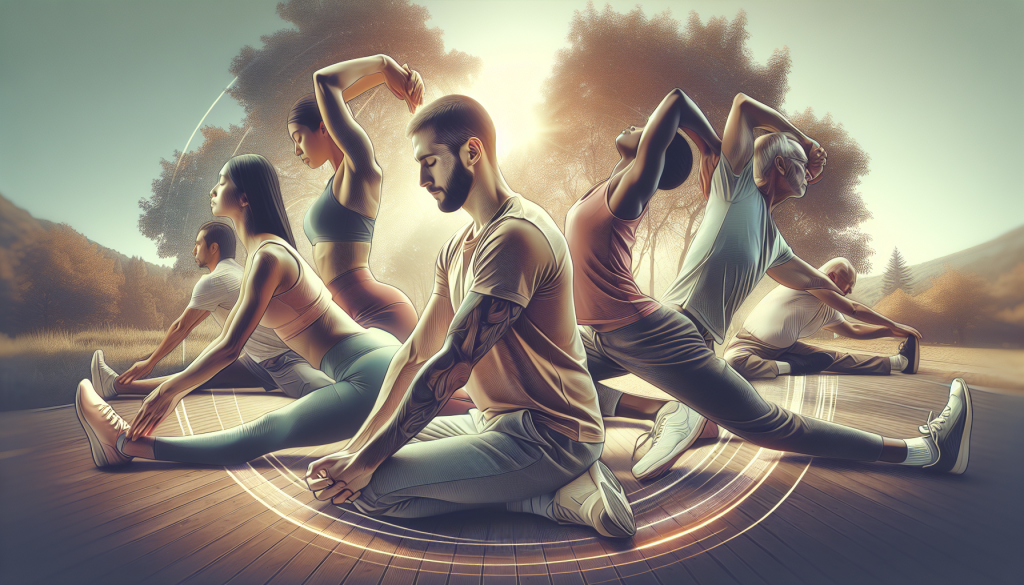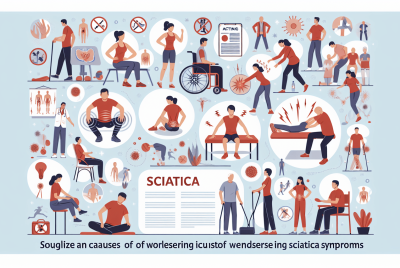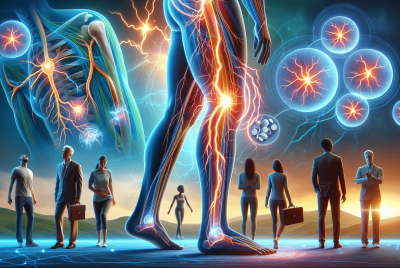Effective Top 10 Stretches For Back Pain Relief
In need of some relief from that nagging back pain? Look no further – we’ve got you covered! This article will guide you through the effective stretches for back pain relief that are sure to provide you with much-needed relief. Whether you’re suffering from chronic pain or just dealing with the occasional ache, these stretches are easy to do and highly effective. So grab a mat, put on some comfortable clothes, and get ready to stretch your way to a pain-free back!
Top 10 Stretches For Back Pain Relief
1. Child’s Pose Stretch
Instructions
To perform the Child’s Pose stretch, start by kneeling on the floor with your knees hip-width apart. Slowly lower your buttocks towards your heels and extend your arms straight in front of you. Rest your forehead on the mat or the floor. Take deep breaths and relax into the stretch. Hold this position for about 1-2 minutes, or as long as comfortable.
Benefits
The Child’s Pose stretch is a gentle stretch that helps to release tension in the lower back, hips, and thighs. It provides a gentle stretch to the spine, promoting relaxation and relieving stress. This pose also helps to open up the hips and stretch the muscles of the lower body. It can be particularly beneficial for individuals suffering from back pain.
Precautions
While the Child’s Pose stretches for back pain relief is generally safe for most people, there are a few precautions to keep in mind. If you have a knee injury or knee pain, it is important to use a cushion or blanket under your knees for support. If you have any other specific medical conditions or concerns, it is always best to consult with a healthcare professional before attempting any new exercise or stretch.
2. Cat-Camel Stretch
Instructions
To perform the Cat-Camel Stretch, start by getting down on your hands and knees with your hands directly under your shoulders and your knees under your hips. Begin by arching your back upwards towards the ceiling, bringing your chin towards your chest. Hold this position for a few seconds, and then slowly lower your back to a neutral position. Next, gently arch your back downwards, lifting your head and tailbone towards the ceiling. Repeat this sequence for about 10-15 repetitions.
Benefits
The Cat-Camel Stretch helps to improve flexibility and mobility in the spine. It stretches the muscles of the back and neck, relieving tension and promoting relaxation. This stretches for back pain relief also stimulates the abdominal organs, improving digestion and circulation. It can be particularly beneficial for individuals with back pain or those who spend long hours sitting or standing.
Precautions
If you have any pre-existing back or neck injuries, it is important to exercise caution when performing the Cat-Camel Stretch. Avoid any movements or positions that cause pain or discomfort. If you have any concerns or uncertainties, consult with a healthcare professional before attempting this stretch.
Effective Top 10 Stretches For Back Pain Relief
3. Cobra Stretch
Instructions
To perform the Cobra Stretch, start by lying flat on your stomach with your legs extended behind you. Place your palms on the mat or the floor, directly under your shoulders. Inhale as you slowly lift your chest off the mat, keeping your hips and legs on the ground. Keep your shoulders relaxed and your gaze forward. Hold this position for about 15-30 seconds, and then slowly lower your chest back down to the mat.
Benefits
The Cobra Stretch is an excellent stretch for the muscles of the back, particularly the lower back. It helps to strengthen the spine and improve posture. This stretches for back pain relief also opens up the chest and lungs, enhancing breathing capacity and oxygen intake. It can provide relief from back pain and improve overall flexibility and mobility.
Precautions
Individuals with herniated discs or other significant spinal injuries should avoid the Cobra Stretch. If you have any concerns or medical conditions, it is best to consult with a healthcare professional before attempting these stretches for back pain relief.
4. Seated Forward Bend
Instructions
To perform the Seated Forward Bend, start by sitting on the floor with your legs extended in front of you. Flex your feet, and reach your arms towards your toes. Slowly begin to hinge forward at the hips, leading with your chest. Continue to reach forward until you feel a gentle stretch in the back of your legs. Hold this position for about 30-60 seconds, breathing deeply.
Benefits
The Seated Forward Bend is an effective stretches for back pain relief, hamstrings, and hips. It helps to improve flexibility in the spine and stretch the muscles of the legs. This stretch also stimulates the digestive system and can provide relief from back pain. It promotes relaxation and calms the mind.
Precautions
Individuals with pre-existing back injuries or hamstring issues should exercise caution when performing the Seated Forward Bend. Avoid any movements or positions that cause pain or discomfort. As always, if you have any concerns or uncertainties, consult with a healthcare professional.

5. Triangle Pose Stretch
Instructions
To perform the Triangle Pose stretch, start by standing with your feet about 3-4 feet apart. Turn your right foot out to the side, and extend your arms out to shoulder height. Hinge at the waist and reach your right hand toward your right foot, while keeping your left arm extended upwards. Hold this position for about 30 seconds, and then switch sides.
Benefits
The Triangle Pose stretch is great for stretching and strengthening the muscles of the legs, hips, and spine. It helps to improve balance, flexibility, and posture. This stretches for back pain relief also stimulates the abdominal organs, aiding digestion and relieving constipation. It can be particularly beneficial for individuals with back pain or those who spend long hours sitting or standing.
Precautions
Avoid the Triangle Pose stretch if you have high blood pressure, low blood pressure, or any heart conditions. If you have any concerns or medical conditions, it is always best to consult with a healthcare professional before attempting this stretch.
6. Child’s Pose with Side Stretch
Instructions
To perform the Child’s Pose with Side Stretch, start in a kneeling position with your knees hip-width apart. Extend your arms forward and lower your chest towards the mat or the floor, as you would in the regular Child’s Pose. From here, walk your hands over towards the right side of the mat, feeling a stretch in the left side of your body. Hold this position for about 30 seconds, and then switch sides.
Benefits
The Child’s Pose with Side Stretch provides a deeper stretch for the sides of the body, particularly the muscles of the lower back, hips, and ribcage. It helps to release tension in these areas and improve flexibility. This stretch also promotes relaxation and can provide relief from back pain.
Precautions
If you have any pre-existing injuries or conditions that affect the shoulders, back, or hips, it is important to exercise caution when performing the Child’s Pose with Side Stretch. Avoid any movements or positions that cause pain or discomfort. If you have any concerns or uncertainties, consult with a healthcare professional before attempting this stretch.

7. Supine Hamstring Stretch
Instructions
To perform the Supine Hamstring Stretch, start by lying flat on your back with your legs extended in front of you. Bend your right knee and place a strap, towel, or belt around the arch of your right foot. Hold onto the ends of the strap with both hands, and slowly begin to straighten your right leg up towards the ceiling. Keep your left leg extended on the mat. Hold this position for about 30-60 seconds, and then switch sides.
Benefits
The Supine Hamstring Stretch is an effective stretch for the hamstrings, lower back, and hips. It helps to improve flexibility, relieve muscle tension, and reduce lower back pain. This stretch also helps to improve circulation and reduce the risk of injury.
Precautions
Avoid the Supine Hamstring Stretch if you have any pre-existing lower back or hamstring injuries. If you have any concerns or uncertainties, consult with a healthcare professional before attempting this stretch.
8. Knee-to-Chest Stretch
Instructions
To perform the Knee-to-Chest Stretch, start by lying flat on your back with your legs extended in front of you. Bend your right knee and bring it towards your chest, using your hands to gently pull it closer. You can also interlace your fingers and place them behind your right thigh. Hold this position for about 30 seconds, and then switch sides.
Benefits
The Knee-to-Chest Stretch is an excellent stretch for the lower back, glutes, and hips. It helps to release tension in these areas and improve flexibility. This stretch also stimulates the digestive organs and can provide relief from back pain.
Precautions
If you have any pre-existing back, hip, or knee injuries, it is important to exercise caution when performing the Knee-to-Chest Stretch. Avoid any movements or positions that cause pain or discomfort. If you have any concerns or uncertainties, consult with a healthcare professional before attempting this stretch.

9. Bridge Pose
Instructions
To perform the Bridge Pose, start by lying flat on your back with your knees bent and your feet flat on the mat. Place your palms flat on the mat beside your hips, fingertips pointing towards your feet. Pressing into your hands and feet, lift your hips off the mat, creating a bridge shape with your body. Hold this position for about 30 seconds to 1 minute.
Benefits
The Bridge Pose is a great stretch for the back, hips, and thighs. It helps to strengthen the core muscles and improve flexibility. This stretch also stimulates the abdominal organs and improves digestion. It can provide relief from back pain and promote relaxation.
Precautions
Individuals with neck or shoulder issues should avoid the Bridge Pose or modify it by using a blanket or block under the shoulders for support. If you have any concerns or uncertainties, consult with a healthcare professional before attempting this stretch to get rid of the back pain.
10. Pigeon Pose
Instructions
To perform the Pigeon Pose, start in a high plank position. Bring your right knee towards your right wrist and your right foot towards your left wrist. Extend your left leg straight behind you, keeping your hips square. Lower your upper body towards the mat, resting on your forearms or extending your arms out in front of you. Hold this position for about 30 seconds to 1 minute, and then switch sides.
Benefits
The Pigeon Pose is an excellent stretch for the hips, glutes, and lower back. It helps to improve flexibility, relieve tension, and reduce sciatic nerve pain. This stretch also stimulates the internal organs and aids in digestion. It can be particularly beneficial for individuals with tight hips or those who sit for long periods.
Precautions
Individuals with knee or hip injuries should exercise caution when performing the Pigeon Pose. Avoid any movements or positions that cause pain or discomfort. If you have any concerns or uncertainties, consult with a healthcare professional before attempting this stretch.
Incorporating these top 10 stretches into your routine can provide relief and improve flexibility for individuals experiencing back pain. Remember to listen to your body and only go as far as is comfortable for you. Stretching should be done gradually and without force. If you have any underlying medical conditions or concerns, it is always best to consult with a healthcare professional before starting a new stretching program. So go ahead, give these stretches a try and enjoy the benefits of a healthier, more relaxed back!



